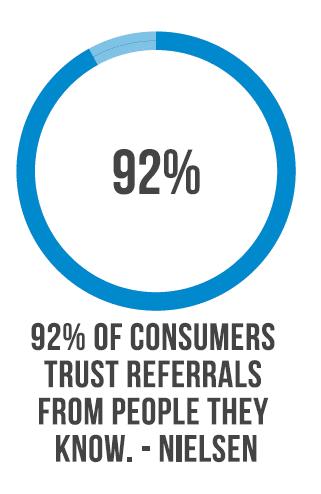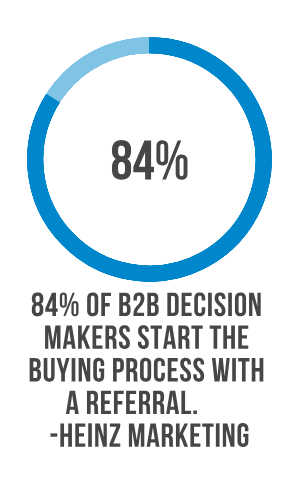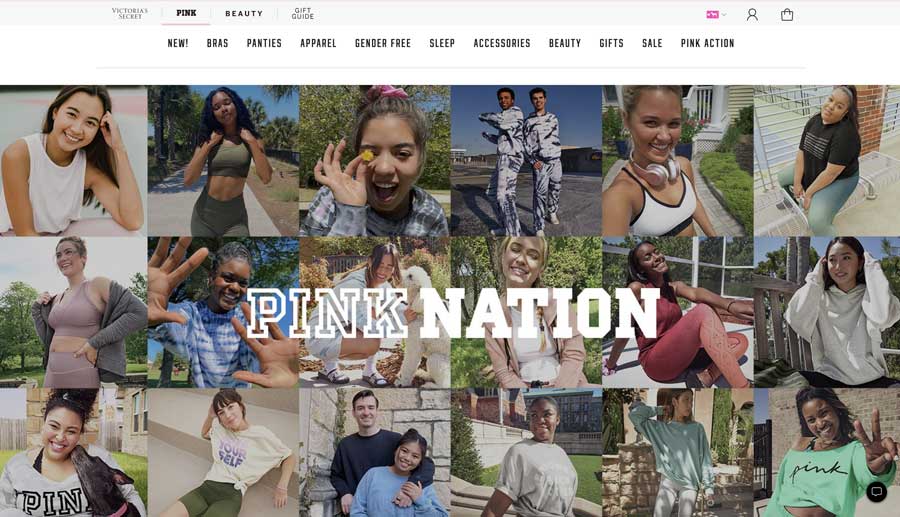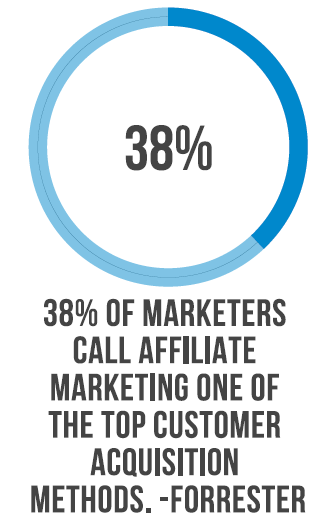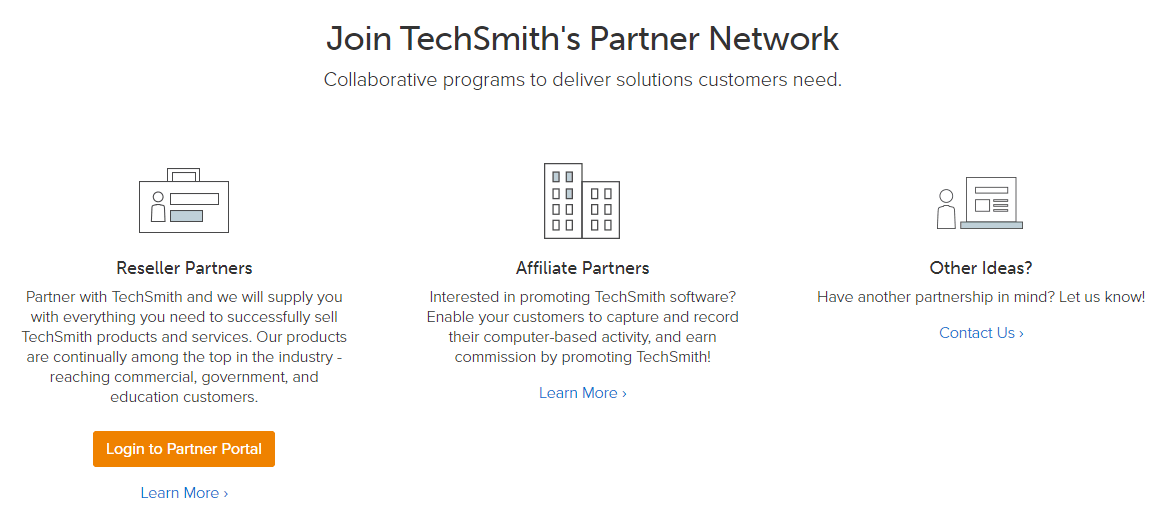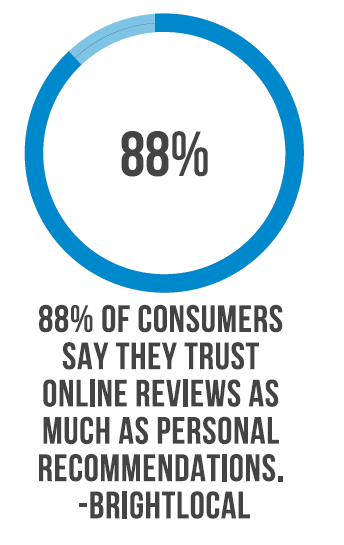Word-of-mouth marketing (also called WOM marketing or word-of-mouth advertising) is any form of marketing where one person talks to another about their positive experiences with a brand or product.
Sometimes, word of mouth may seem hard to control, as it’s in the hands of your market. But there are many ways for your brand to harness word of mouth for itself.
Below, we cover some of the most popular and effective types of word-of-mouth marketing strategies, and help you choose which type or types will best meet the needs of your business. Let’s start by breaking down why word-of-mouth marketing is so vital.
Why do you need word-of-mouth marketing?
Word-of-mouth marketing is powerful because people trust the recommendations and endorsements of their peers far more than they trust ads and other messages that come straight from your brand.
They’re more likely to make crucial purchasing decisions when they see and hear that people like them love your products. This allows you to reach more people in your target audience, increase your conversion rates, and expand your customer base.
As a well-known Nielsen report states, 92% of people trust word-of-mouth recommendations from people they know, more than all other forms of advertising.
And word of mouth often doesn’t stop after just one interaction. Since social media can quickly create a cycle of repeated sharing, one word-of-mouth recommendation could even result in viral growth.
What are the two types of word of mouth?
All types of word-of-mouth marketing can be divided into two main categories: organic word of mouth and amplified word of mouth.
Organic word of mouth refers to any peer-to-peer sharing where someone positively talks about your brand, without any sort of direct action from your brand.
This means that most organic word of mouth is completely free publicity. It also occurs frequently as people naturally talk. But this type of word of mouth can be unpredictable and difficult to track. In fact, much of it is “dark social,” or sharing that doesn’t have a trackable source.
That’s where amplified word of mouth comes in. Amplified word of mouth is any peer-to-peer sharing that your brand actively encourages via a marketing campaign.
Although the shared messages themselves still come from your market (and not directly from your brand), your brand makes this sharing easier via the campaign – and can track how much sharing occurs and where it comes from.
There are many types of amplified word-of-mouth marketing that will let you inspire conversation and take control of sharing, as you’ll see below.
Picking the best types of word-of-mouth marketing campaigns
There are many channels available to increase your word of mouth. What’s important is picking the best type of word-of-mouth marketing for your business.
Some businesses choose to implement a variety of channels, while others focus on creating one in-depth word-of-mouth engine. It all depends on the outcome you want. For example, a business may choose both a referral program and a partner program to accomplish two different tasks.
There’s also the matter of how much control you’ll have over sharing.
A rewards program run by referral or rewards program software gives your business plenty of control over how you’ll encourage word-of-mouth sharing. So, it’s clearly a form of amplified word of mouth.
Other types of word-of-mouth marketing don’t allow for as much structure or control on the business end. But regardless, they are still a great resource.
For example, reviews and testimonials work for almost any business out there and are an excellent way to generate word of mouth. But, a business has very little control over what someone will say about them online (including people who have a large blog or social media following).
Let’s do a quick overview of a few types of word-of-mouth marketing.
| Who | What | Where | |
|---|---|---|---|
| Customer referral marketing | The most common referral programs are for customers & employees | Refer people they personally know | In person, social media, text, email |
| Partner programs | Usually non-competing businesses, who may share similar customers | Refer their customers who need a service like yours | On their website, email, in person |
| Influencer marketing | People who have influence over potential buyers | Influence their fans to like the same things as them | Social media, in person, video |
| Brand ambassador marketing | Hand-picked reps who promote your brand in the long term | Build relationships and authentically share their experiences with your brand | In person, social media |
| Affiliate marketing | People who have a high blog or social media following | Promote specific items and brands to their followers | On their blogs, social media, video |
| Reviews and testimonials | Those who have first-hand experience with your product/service | Provide feedback on specific software, services, and products | Review platforms, social media |
| User-generated content | Customers who love your brand and have an online presence | Create and post positive content that features your brand | Social media, sometimes on their blogs |
Now, let’s review examples of each type of word-of-mouth marketing channel.
1. Referral programs (Refer-a-friend programs)
Referral programs encourage happy customers to share your brand directly with friends who would benefit from your products or services. They also reward customers when a friend they refer makes a purchase from you.
This doesn’t involve anything complicated or privacy-invading, like filling in forms. You don’t want referring to be time-consuming on the advocate’s end.
Rather, a referral program is a streamlined program run with the help of referral software. It makes sharing easy for your customers, tracks each referral, and instantly rewards customers with free gifts when they successfully make referrals. All the while, it keeps advocates’ and friends’ information secure.
Customers share information with friends in ways they would naturally share what they love, such as email, social media, and SMS. But their friends’ info doesn’t leave the “bubble” of the referral program, unless a friend becomes a customer and later volunteers that info on their own.
When you design a referral marketing program, you need to consider the advocate’s journey, as well as the potential customer’s. No one wants to be signed up for something without their permission. So, it’s all about offering the potential customer the choice to join, and making the message feel like it authentically comes from the advocate. This can be accomplished by providing advocates with a referral link to share.
Used for: Businesses who are looking for high-quality leads. Referrals are built on trust, and they are personally known by the referrer. Therefore, referral marketing may not produce as many referrals, but the ones that it does produce are better since they are a direct/personal lead.
Key use case: Evernote, the desktop note-taking app, allows anyone who is signed up (with any plan) the option to share the app with their friends. As soon as the user signs into their account, the option to share will appear in their drop-down menu.
Evernote uses a double-sided referral reward: advocates earn service upgrades, while their friends enjoy a free trial of the Premium version. This further incentivizes both parties to participate and provides an extra push for word of mouth to happen.
How to do it:
- Make it easy for both your existing customers and their friends to join and participate.
- Make the program easy to find. A great referral program promotion strategy means your program is easy to see.
- Make it shareable via many channels. Most referral software programs will allow a variety of sharing options.
- Offer enticing rewards for both advocates and friends.
- Give the end-user the choice to opt in. In other words, avoid having the customer auto-enroll friends without their knowledge. Make sure the referral is given the option to participate or not.
2. Partner programs
Partner programs can be a great growth strategy. A channel partner can help you boost sales, as well as give you access to other markets that you might not reach on your own.
Many partner programs operate similarly to referral programs. The main difference is the referrer is not a customer, but rather a partner business or other third-party distributor.
The terminology is usually a bit different as well. In a partner program, you may hear the term finder’s fees. And the software used is often different – PRM software (although some referral software that has the flexibility to run partner programs counts as PRM software).
Used for: A channel partner program makes sense for businesses who have similar customers, but that don’t compete with each other. A partner may distribute a good or service that can benefit your customers as well. You might create a program so that you can sell your own products through your partner. A partner program is great for gaining access to client networks that would otherwise be difficult to tap into.
Key use case: TechSmith’s partner network offers a few options for collaboration. The company partners with businesses of all sizes, which allows everyone to build up relationships and scale their business. These reseller partners are supplied with everything they need to sell TechSmith products and services. TechSmith also offers an affiliate program that we’ll discuss later on.
How to do it:
- Provide a service that benefits a variety of businesses.
- Find a business that has similar customers (or an individual who can help you distribute your product to new markets). Make sure they would be a good fit as a partner, based on your business goals.
- Offer an incentive for partners. This can be a finder’s fee, discounted services, or a different partner incentive that makes sense for your business.
- Support partners and communicate with them regularly, to make sure everything is going smoothly.
3. Influencer marketing
Influencer marketing is another way of increasing word of mouth. Some would say this type of marketing is the modern day word-of-mouth marketing and focuses heavily on brand awareness. It involves content creators who post what they love about your product on a short-term basis.
When celebrities, expert advocates, or top internet famous individuals post about a product, the reach can be pretty impressive. And don’t count out the smaller influencers (micro-influencers). These content creators might have a smaller reach, but their tight-knit circles of followers engage with them more often and trust them like friends.
With that being said, it can be difficult to track the effectiveness of an influencer program because the brand can’t entirely correlate a sale to an influencer. Instead, they usually look at things like post engagement.
Used for: Brands who are looking for a quick way to generate buzz. Influencer marketing is great for getting out there in front of many people, though it doesn’t necessarily mean that your brand is getting placed in front of good fitting leads.
Key use case: Nike is a big brand, and in addition to having great products, it’s been backed up by several celebrity endorsements, from NBA players, to fitness gurus, to social media figures, to famous musicians. Because these people are in the public eye, they easily influence their fan base in purchasing products they enjoy, like Nike.
How to do it:
- Have a great product, one that an influencer is going to want to use and promote.
- Find an influencer who likes your product and who has a good following. Your brand should look at how many social followers the influencer has and correlate that with how much traffic that influencer can potentially bring to them.
- Have the influencer promote your product. Typically, this creates a buzz for the product and gets people to purchase.
- Provide compensation. Influencers may really like your product, but it doesn’t mean they are going to freely advertise it for you.
- Try using influencer marketing software.
4. Brand ambassador marketing
While influencer marketing is short-term, brand ambassadors are hand-selected representatives who promote your brand over a longer period.
These ambassadors authentically share why they love your brand and how they use your products, both online and offline.
And since they focus on building relationships with their audiences rather than selling as many units as possible, their recommendations are especially trusted.
Used for: Brands focused on building audience trust through relationships, who want to recruit longer-term, formalized representatives.
Key use case: Apparel brand PINK’s ambassador program recruits college-age women who already have established online and offline networks, and a known love for the brand.
After in-depth brand training, these reps promote PINK by hosting on-campus events, orchestrating pop-ups, and collaborating with campus organizations and PINK stores.
These strategic moves are all about building relationships with other college-age women, who make up PINK’s audience.
For more on the best brand ambassador programs, don’t miss our article on brand ambassador program examples.
How to do it:
- Find enthusiastic individuals who love your brand, have trusted online and offline networks that match your audience, and are willing to promote you in the long term. Have they posted about you before without prompting? Even better!
- Give ambassadors detailed training of how to promote your brand.
- Regularly supply them with promotional materials and brand updates, so they’re always in the know.
- Reward ambassadors with appropriate incentives for all their hard work.
5. Affiliate marketing
Affiliate marketing is similar to referral marketing in that it places a focus on new customer acquisition.
But in affiliate programs, people don’t promote products only to people they know. Instead, bloggers, social media personalities, and other content creators promote your brand to everyone who visits their channels. These content creators (called affiliates) place links to your site on their channels, and earn a commission every time someone makes a purchase via that link.
This means the audience reach is expanded, but the product is promoted to everyone who lands on the affiliate site, even if they are not a good fit.
Used for: Brands who want to advertise specific products on popular blogging channels and other content creators’ mediums. Affiliate links are often used to promote a single product, rather than the whole brand
Key use case: TechSmith, which we spotlighted earlier for their partner program, offers a pretty great affiliate program as well. Affiliates get to promote Snagit and Camtasia, two of their more popular tools. With this program, affiliates can earn 15% commission per sale made through their affiliate link.
How to do it:
- Find and recruit affiliates (content creators) who are in your niche and have an audience that matches yours.
- Have the affiliates sign an affiliate marketing agreement, which will outline how they can and can’t promote your brand.
- Provide the affiliate with their own affiliate links to place on their channels, created with affiliate marketing software.
- Compensate affiliates for effective word of mouth with a commission on every sale.
6. Customer reviews and testimonials
Reviews create digital word of mouth, all on their own. Though many businesses send links to the customer asking for their feedback, customers oftentimes will write a review willingly on their own. This, however, doesn’t always shine a positive light on a business. It also doesn’t offer the business as much control as other types of word-of-mouth marketing.
Many review and reputation management platforms help not only keep a brand’s reputation afloat, but they also provide good word-of-mouth marketing too.
Used for: Any business. No matter what service or product you supply, leads will turn to review sites to find which brand best suits them. In fact, 90% of consumers read online reviews before visiting a business.
Key use case: Capterra is one of the many review platforms on the web. They provide real user insight to thousands of different software businesses. Like most other platforms, any user can join and write a review. Any business that offers software can create a profile to start receiving word-of-mouth reviews.
How to do it:
- Find review platforms.
- Create a profile on the review platform.
- Share your profile with current customers to start building up your reviews.
- Be sure to check in periodically because you’ll want to respond to less than favorable reviews.
- Share some of your good reviews and testimonials on your website and social sites.
7. User-generated content
User-generated content (UGC) refers to any content your audience creates on social media that portrays your brand in a positive light. When they share this UGC, your customers instantly recommend your brand to all of their followers at once. A single social media post could get shared far and wide, possibly creating exponential brand awareness.
Although most UGC is created spontaneously, you can encourage UGC by crafting branded hashtags, running contests and creating opportunities where you feature UGC on your own account.
UGC is a type of peer-to-peer marketing, and is sometimes called consumer generated marketing.
Used for: Any business with a presence on social networks. Don’t miss this opportunity to let customers do social media marketing for you, and potentially create viral marketing!
Key use case: Apple created the #ShotoniPhone hashtag to show off how stunning iPhone photos look, using UGC from its customers. This viral hashtag has over 22.5 million Instagram posts!
Apple also runs challenges linked to the hashtag (and sometimes focused on showing off certain iPhone photo modes). The best iPhone photos for each given topic earn an invaluable exposure-related prize. Once, top photos were even featured on Apple billboards!
How to do it:
- Have a product or service worth sharing!
- Create a branded hashtag.
- Run contests where the best UGC featuring your product earns a reward.
- With creators’ permission, feature the best spontaneous UGC on your own social accounts.
Wrapping up
Businesses of all scales use word-of-mouth marketing to build up their brand awareness. Regardless of how a brand chooses to build their channels, though, one thing is certain – word of mouth relies on a good product and service. The marketing strategy can only be used if it has a good foundation to rely on.

